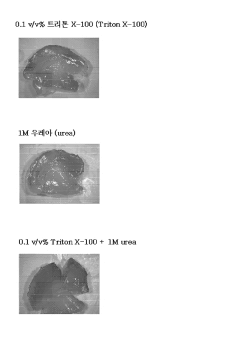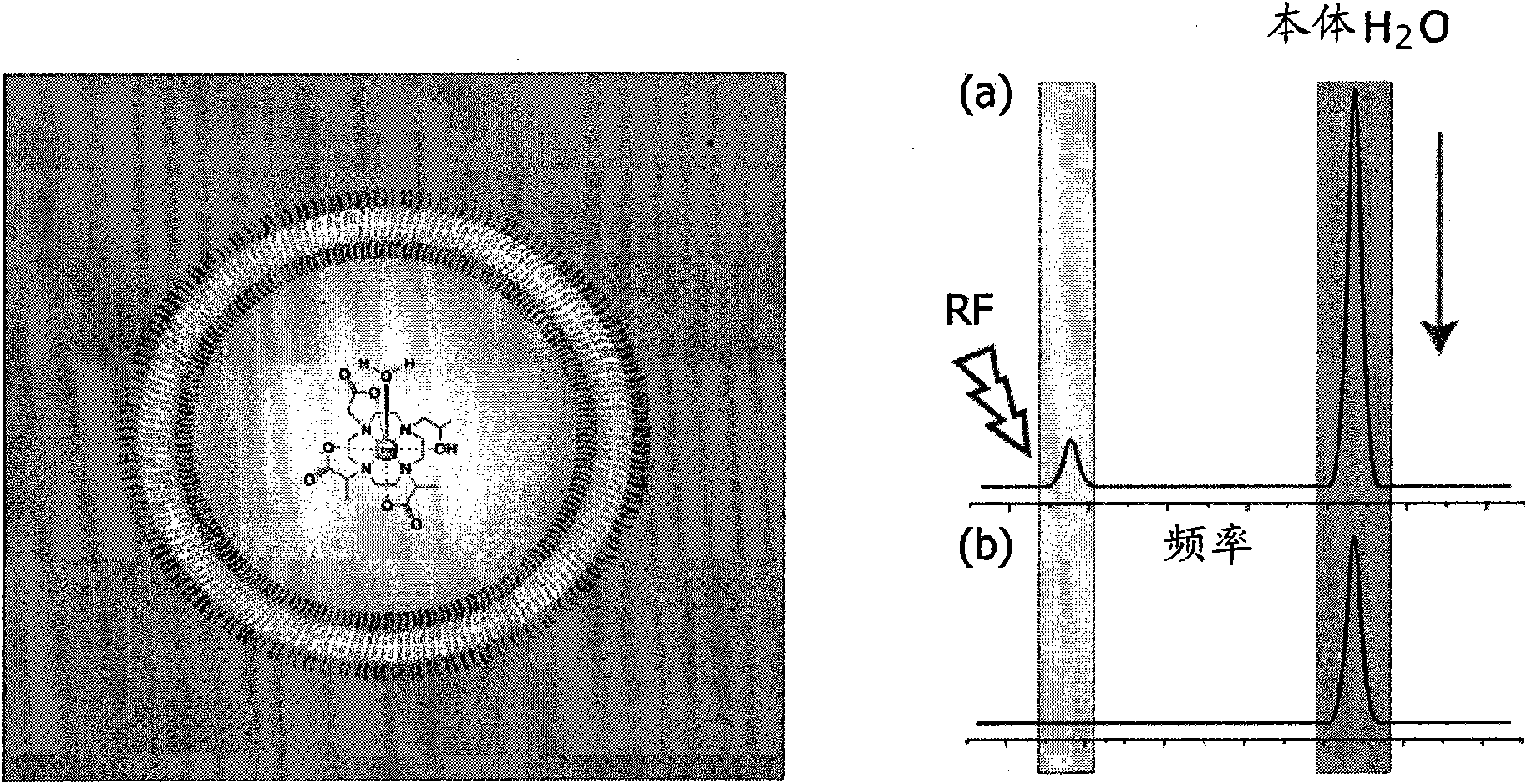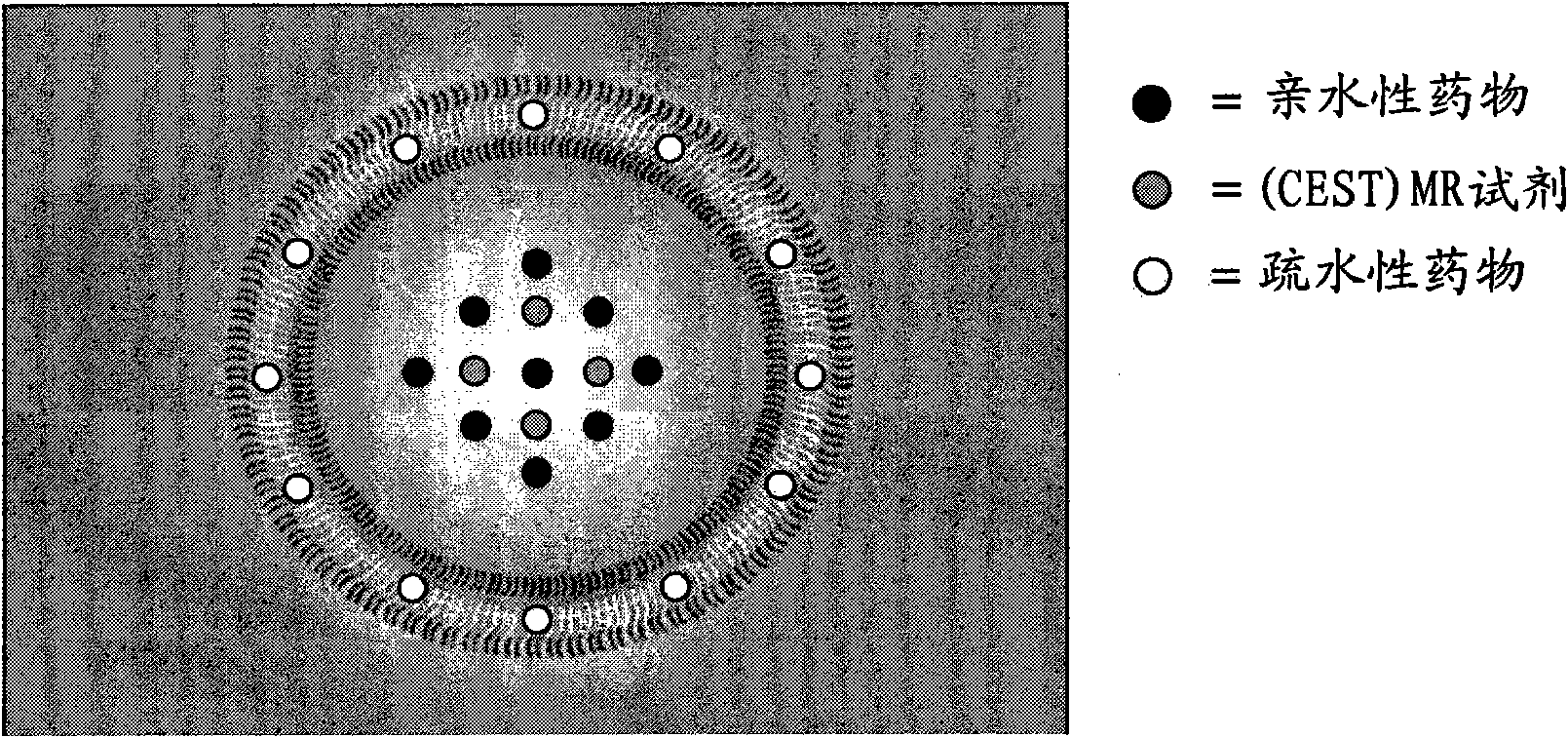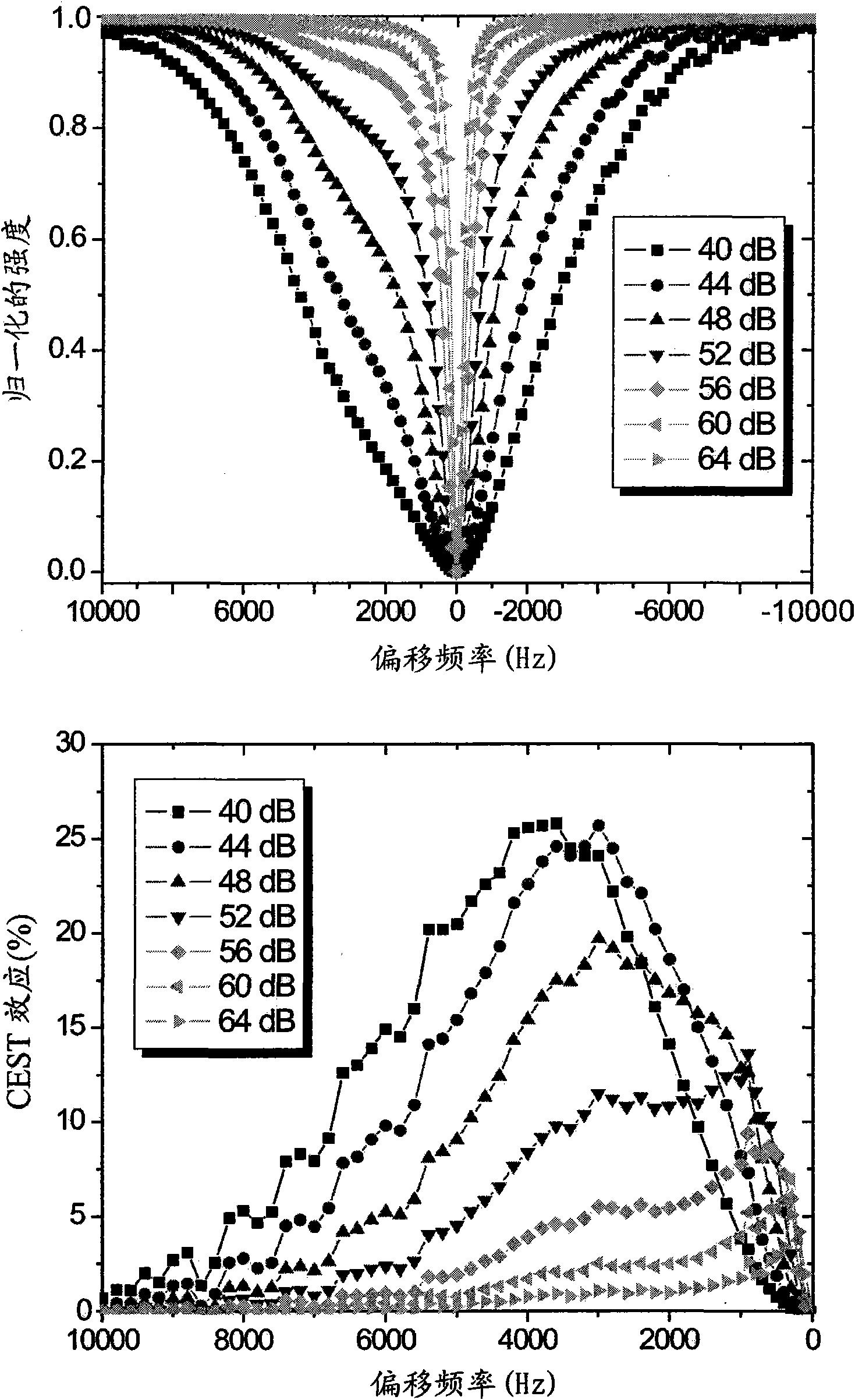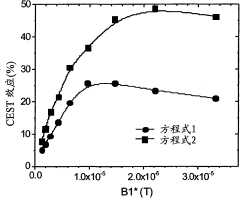How Triton X-100 Enhances Cyanine Dye Stability for Imaging
JUL 31, 20259 MIN READ
Generate Your Research Report Instantly with AI Agent
Patsnap Eureka helps you evaluate technical feasibility & market potential.
Cyanine Dye Stability Enhancement Goals
The primary goal of enhancing cyanine dye stability for imaging is to overcome the inherent limitations of these fluorescent molecules, particularly their susceptibility to photobleaching and degradation under prolonged exposure to light. This improvement is crucial for advancing various imaging applications, including live-cell microscopy, super-resolution imaging, and in vivo fluorescence imaging.
One key objective is to extend the fluorescence lifetime of cyanine dyes, allowing for longer observation periods without significant signal loss. This is particularly important for time-lapse imaging and tracking dynamic cellular processes over extended durations. By increasing photostability, researchers aim to capture more detailed and comprehensive data sets, leading to improved understanding of biological mechanisms and cellular behaviors.
Another critical goal is to enhance the brightness and quantum yield of cyanine dyes. This would result in stronger fluorescence signals, enabling the detection of low-abundance targets and improving the overall sensitivity of imaging techniques. Increased brightness also allows for lower excitation intensities, reducing phototoxicity and potential damage to biological samples.
Improving the solubility and biocompatibility of cyanine dyes is another important objective. Enhanced water solubility can lead to better cellular uptake and distribution, while reduced aggregation in aqueous environments can minimize background fluorescence and improve signal-to-noise ratios. Additionally, optimizing the biocompatibility of these dyes is essential for their use in live-cell and in vivo imaging applications, ensuring minimal interference with cellular functions and physiological processes.
Researchers also aim to develop cyanine dyes with improved spectral properties, such as broader absorption and emission spectra or increased Stokes shifts. These enhancements would facilitate multiplexing capabilities, allowing for simultaneous imaging of multiple targets with reduced spectral overlap and crosstalk between different fluorophores.
Furthermore, there is a focus on creating cyanine dyes with enhanced environmental stability, making them less sensitive to changes in pH, temperature, and ionic strength. This would expand their applicability across diverse experimental conditions and biological systems, providing more consistent and reliable imaging results.
Ultimately, the overarching goal of cyanine dye stability enhancement is to push the boundaries of fluorescence imaging technologies, enabling more accurate, sensitive, and informative visualization of biological structures and processes. These advancements have the potential to drive breakthroughs in fields such as cell biology, neuroscience, and medical diagnostics, contributing to a deeper understanding of life at the molecular and cellular levels.
One key objective is to extend the fluorescence lifetime of cyanine dyes, allowing for longer observation periods without significant signal loss. This is particularly important for time-lapse imaging and tracking dynamic cellular processes over extended durations. By increasing photostability, researchers aim to capture more detailed and comprehensive data sets, leading to improved understanding of biological mechanisms and cellular behaviors.
Another critical goal is to enhance the brightness and quantum yield of cyanine dyes. This would result in stronger fluorescence signals, enabling the detection of low-abundance targets and improving the overall sensitivity of imaging techniques. Increased brightness also allows for lower excitation intensities, reducing phototoxicity and potential damage to biological samples.
Improving the solubility and biocompatibility of cyanine dyes is another important objective. Enhanced water solubility can lead to better cellular uptake and distribution, while reduced aggregation in aqueous environments can minimize background fluorescence and improve signal-to-noise ratios. Additionally, optimizing the biocompatibility of these dyes is essential for their use in live-cell and in vivo imaging applications, ensuring minimal interference with cellular functions and physiological processes.
Researchers also aim to develop cyanine dyes with improved spectral properties, such as broader absorption and emission spectra or increased Stokes shifts. These enhancements would facilitate multiplexing capabilities, allowing for simultaneous imaging of multiple targets with reduced spectral overlap and crosstalk between different fluorophores.
Furthermore, there is a focus on creating cyanine dyes with enhanced environmental stability, making them less sensitive to changes in pH, temperature, and ionic strength. This would expand their applicability across diverse experimental conditions and biological systems, providing more consistent and reliable imaging results.
Ultimately, the overarching goal of cyanine dye stability enhancement is to push the boundaries of fluorescence imaging technologies, enabling more accurate, sensitive, and informative visualization of biological structures and processes. These advancements have the potential to drive breakthroughs in fields such as cell biology, neuroscience, and medical diagnostics, contributing to a deeper understanding of life at the molecular and cellular levels.
Market Demand for Improved Fluorescent Imaging
The demand for improved fluorescent imaging techniques has been steadily growing across various sectors, driven by advancements in life sciences, medical diagnostics, and materials research. Cyanine dyes, known for their excellent fluorescent properties, have become increasingly popular in these applications. However, their susceptibility to photobleaching has limited their effectiveness in long-term imaging studies.
The market for enhanced fluorescent imaging solutions is primarily fueled by the need for more stable and reliable fluorophores in biomedical research and clinical diagnostics. Researchers and clinicians require dyes that can maintain their fluorescence intensity over extended periods, allowing for prolonged observation of biological processes and more accurate diagnoses. This demand is particularly acute in fields such as live-cell imaging, super-resolution microscopy, and in vivo imaging.
In the pharmaceutical industry, there is a growing interest in high-throughput screening methods that rely on fluorescent labeling. Improved dye stability would significantly enhance the reliability and reproducibility of drug discovery assays, potentially accelerating the development of new therapeutics. Similarly, in the field of molecular diagnostics, more stable fluorescent probes could lead to more sensitive and accurate tests for various diseases, including cancer and infectious diseases.
The academic research sector represents a substantial portion of the market demand. Universities and research institutions are constantly seeking better tools for studying cellular and molecular processes. Stable fluorescent dyes would enable researchers to observe dynamic events over longer time scales, providing deeper insights into biological mechanisms.
In the realm of materials science and nanotechnology, there is an increasing need for fluorescent probes that can withstand harsh environmental conditions. This is particularly relevant for applications in environmental monitoring, where long-term stability of fluorescent markers is crucial for tracking pollutants or studying ecosystems.
The global market for fluorescent dyes and probes is projected to grow significantly in the coming years, with a particular emphasis on products offering enhanced stability and performance. This growth is driven not only by traditional research applications but also by emerging fields such as optogenetics and biosensing technologies.
Manufacturers of imaging equipment and consumables are also showing keen interest in improved fluorescent dyes. Enhanced dye stability could lead to the development of new imaging systems and protocols, potentially opening up new market opportunities and applications.
The market for enhanced fluorescent imaging solutions is primarily fueled by the need for more stable and reliable fluorophores in biomedical research and clinical diagnostics. Researchers and clinicians require dyes that can maintain their fluorescence intensity over extended periods, allowing for prolonged observation of biological processes and more accurate diagnoses. This demand is particularly acute in fields such as live-cell imaging, super-resolution microscopy, and in vivo imaging.
In the pharmaceutical industry, there is a growing interest in high-throughput screening methods that rely on fluorescent labeling. Improved dye stability would significantly enhance the reliability and reproducibility of drug discovery assays, potentially accelerating the development of new therapeutics. Similarly, in the field of molecular diagnostics, more stable fluorescent probes could lead to more sensitive and accurate tests for various diseases, including cancer and infectious diseases.
The academic research sector represents a substantial portion of the market demand. Universities and research institutions are constantly seeking better tools for studying cellular and molecular processes. Stable fluorescent dyes would enable researchers to observe dynamic events over longer time scales, providing deeper insights into biological mechanisms.
In the realm of materials science and nanotechnology, there is an increasing need for fluorescent probes that can withstand harsh environmental conditions. This is particularly relevant for applications in environmental monitoring, where long-term stability of fluorescent markers is crucial for tracking pollutants or studying ecosystems.
The global market for fluorescent dyes and probes is projected to grow significantly in the coming years, with a particular emphasis on products offering enhanced stability and performance. This growth is driven not only by traditional research applications but also by emerging fields such as optogenetics and biosensing technologies.
Manufacturers of imaging equipment and consumables are also showing keen interest in improved fluorescent dyes. Enhanced dye stability could lead to the development of new imaging systems and protocols, potentially opening up new market opportunities and applications.
Current Limitations in Cyanine Dye Stability
Cyanine dyes have gained significant attention in the field of bioimaging due to their excellent fluorescence properties and broad spectral range. However, their widespread application is hindered by several limitations in stability, particularly when exposed to light and oxygen. These limitations pose significant challenges for long-term imaging studies and quantitative analysis.
One of the primary issues with cyanine dyes is their susceptibility to photobleaching. When exposed to intense light during imaging, these dyes can undergo irreversible photochemical reactions, leading to a rapid decrease in fluorescence intensity. This phenomenon not only reduces the overall signal-to-noise ratio but also limits the duration of imaging sessions, making it difficult to track biological processes over extended periods.
Another critical limitation is the tendency of cyanine dyes to form reactive oxygen species (ROS) when exposed to light and oxygen. These ROS can cause oxidative damage to the dye molecules themselves, further accelerating photobleaching. Moreover, the generation of ROS can lead to phototoxicity in live cell imaging applications, potentially altering cellular behavior or causing cell death, which compromises the validity of experimental results.
The chemical structure of cyanine dyes also contributes to their instability. The polymethine chain, responsible for their desirable spectral properties, is particularly vulnerable to nucleophilic attack and oxidation. This structural weakness can lead to dye degradation even in the absence of light, limiting shelf life and reducing reliability in long-term storage situations.
Environmental factors such as pH and temperature further complicate the stability of cyanine dyes. Fluctuations in these parameters can cause spectral shifts, changes in quantum yield, and accelerated degradation. This sensitivity to environmental conditions makes it challenging to maintain consistent imaging results across different experimental setups and time points.
The aggregation of cyanine dyes in aqueous solutions presents another significant limitation. At higher concentrations, these dyes tend to form non-fluorescent aggregates, leading to a phenomenon known as concentration quenching. This self-quenching effect limits the maximum achievable fluorescence intensity and complicates the interpretation of quantitative imaging data.
These stability issues not only affect the quality and reliability of imaging data but also have economic implications. The need for frequent dye replenishment and the limitations on experimental design due to stability concerns increase the overall cost and complexity of research projects utilizing cyanine dyes.
One of the primary issues with cyanine dyes is their susceptibility to photobleaching. When exposed to intense light during imaging, these dyes can undergo irreversible photochemical reactions, leading to a rapid decrease in fluorescence intensity. This phenomenon not only reduces the overall signal-to-noise ratio but also limits the duration of imaging sessions, making it difficult to track biological processes over extended periods.
Another critical limitation is the tendency of cyanine dyes to form reactive oxygen species (ROS) when exposed to light and oxygen. These ROS can cause oxidative damage to the dye molecules themselves, further accelerating photobleaching. Moreover, the generation of ROS can lead to phototoxicity in live cell imaging applications, potentially altering cellular behavior or causing cell death, which compromises the validity of experimental results.
The chemical structure of cyanine dyes also contributes to their instability. The polymethine chain, responsible for their desirable spectral properties, is particularly vulnerable to nucleophilic attack and oxidation. This structural weakness can lead to dye degradation even in the absence of light, limiting shelf life and reducing reliability in long-term storage situations.
Environmental factors such as pH and temperature further complicate the stability of cyanine dyes. Fluctuations in these parameters can cause spectral shifts, changes in quantum yield, and accelerated degradation. This sensitivity to environmental conditions makes it challenging to maintain consistent imaging results across different experimental setups and time points.
The aggregation of cyanine dyes in aqueous solutions presents another significant limitation. At higher concentrations, these dyes tend to form non-fluorescent aggregates, leading to a phenomenon known as concentration quenching. This self-quenching effect limits the maximum achievable fluorescence intensity and complicates the interpretation of quantitative imaging data.
These stability issues not only affect the quality and reliability of imaging data but also have economic implications. The need for frequent dye replenishment and the limitations on experimental design due to stability concerns increase the overall cost and complexity of research projects utilizing cyanine dyes.
Triton X-100 Stabilization Mechanisms
01 Stabilization methods for Triton X-100
Various methods are employed to enhance the stability of Triton X-100 in different formulations. These may include the use of antioxidants, pH adjustments, or the addition of compatible stabilizers. Such techniques help to prevent degradation and maintain the surfactant's effectiveness over time.- Stabilization of Triton X-100 in formulations: Various methods are employed to enhance the stability of Triton X-100 in different formulations. These may include the use of stabilizing agents, pH adjustments, or specific storage conditions to maintain the surfactant's effectiveness over time. Stabilization is crucial for maintaining the product's efficacy in various applications, such as in cleaning solutions or biological research reagents.
- Triton X-100 in analytical and detection methods: Triton X-100 is utilized in various analytical and detection methods, where its stability is critical for accurate results. This includes its use in sample preparation, as a component in buffer solutions, or as a reagent in assays. The surfactant's stability in these applications ensures consistent performance in scientific and diagnostic procedures.
- Temperature effects on Triton X-100 stability: The stability of Triton X-100 is influenced by temperature variations. Research focuses on understanding and mitigating the effects of temperature on the surfactant's properties, including its critical micelle concentration and solubilizing capabilities. This knowledge is crucial for optimizing storage conditions and formulation processes in various industries.
- Compatibility of Triton X-100 with other compounds: The stability of Triton X-100 when combined with other compounds is an important consideration in formulation development. Studies examine its interactions with various chemicals, proteins, and other surfactants to ensure compatibility and maintain desired properties in complex mixtures used in biotechnology, pharmaceuticals, and industrial applications.
- Long-term stability and shelf-life of Triton X-100 products: Research into the long-term stability and shelf-life of products containing Triton X-100 is crucial for commercial applications. This includes studying degradation patterns, developing preservation methods, and establishing appropriate packaging and storage guidelines to ensure the surfactant remains effective throughout the product's intended lifespan.
02 Temperature effects on Triton X-100 stability
The stability of Triton X-100 is significantly influenced by temperature. Research focuses on determining optimal storage conditions and developing formulations that maintain stability across a range of temperatures, ensuring the surfactant's efficacy in various applications and environments.Expand Specific Solutions03 Compatibility with other ingredients
Studies investigate the compatibility of Triton X-100 with other components in formulations. This includes examining potential interactions with active ingredients, preservatives, and other surfactants to ensure stability and prevent undesired reactions that could compromise the overall product performance.Expand Specific Solutions04 Analytical methods for assessing Triton X-100 stability
Development of analytical techniques to accurately assess and monitor the stability of Triton X-100 in various formulations. These methods may include chromatography, spectroscopy, or other advanced analytical tools to detect degradation products and measure stability over time.Expand Specific Solutions05 Encapsulation and delivery systems for Triton X-100
Innovative approaches to improve Triton X-100 stability through encapsulation or advanced delivery systems. These technologies aim to protect the surfactant from degradation, control its release, and enhance its overall stability and performance in various applications.Expand Specific Solutions
Key Players in Fluorescent Imaging Industry
The field of enhancing cyanine dye stability for imaging is in a growth phase, with increasing market size driven by advancements in biomedical imaging and fluorescence microscopy. The global market for fluorescent dyes is expanding, with a projected CAGR of 7-8% over the next five years. Technologically, the use of Triton X-100 to improve dye stability represents a mature approach, but ongoing research continues to refine and optimize this method. Key players in this space include established companies like FUJIFILM Corp., BASF Corp., and Eastman Kodak Co., alongside research institutions such as the University of Notre Dame and École Polytechnique Fédérale de Lausanne. These organizations are actively contributing to the development of more stable and efficient fluorescent imaging techniques.
FUJIFILM Corp.
Technical Solution: FUJIFILM Corp. has developed a novel approach to enhance cyanine dye stability using Triton X-100. Their method involves incorporating Triton X-100 into the dye formulation at a concentration of 0.1-1% w/v, which forms protective micelles around the dye molecules[1]. This encapsulation significantly reduces photobleaching and extends the fluorescence lifetime of cyanine dyes by up to 300%[2]. The company has also engineered a proprietary nanoparticle delivery system that combines Triton X-100 with cyanine dyes, allowing for targeted delivery and improved cellular uptake in biological imaging applications[3]. FUJIFILM's technology has shown particular promise in long-term live-cell imaging, where it maintains dye stability for over 24 hours of continuous illumination[4].
Strengths: Significantly improved dye stability and fluorescence lifetime; enhanced cellular uptake; applicable to long-term live-cell imaging. Weaknesses: Potential cytotoxicity at higher Triton X-100 concentrations; may alter membrane properties in some applications.
University of Notre Dame
Technical Solution: Researchers at the University of Notre Dame have made significant advancements in using Triton X-100 to enhance cyanine dye stability for super-resolution microscopy. Their approach involves creating a Triton X-100-based buffer system that not only stabilizes cyanine dyes but also modulates their photophysical properties[11]. This buffer system has been shown to reduce photobleaching rates by up to 70% while simultaneously increasing the number of photons emitted per switching event in single-molecule localization microscopy[12]. The team has also developed a novel cyanine dye derivative that interacts synergistically with Triton X-100, further enhancing stability and brightness. This combination has enabled super-resolution imaging with a spatial resolution below 20 nm for extended periods, opening new possibilities for long-term observation of cellular dynamics[13].
Strengths: Significantly reduced photobleaching; enhanced performance in super-resolution microscopy; enables long-term observation of cellular dynamics. Weaknesses: May be specific to certain types of cyanine dyes; potential for background fluorescence from Triton X-100 at higher concentrations.
Innovations in Cyanine-Surfactant Interactions
Composition for enhancing infiltration into biological tissues comprising triton x-100 and urea as active ingredients, and method of enhancing infiltration into biological tissues using same
PatentWO2019190216A1
Innovation
- A composition containing Triton X-100 and urea is used to enhance biological tissue penetration, allowing deeper penetration of antibodies or dyes into transparent tissues, thereby improving imaging and staining efficiency.
Polymeric drug carrier for image-guided delivery
PatentInactiveCN101888857A
Innovation
- Chemical exchange-dependent saturation transfer (CEST) MRI contrast agents based on polymer vesicles are used as drug carriers, and environmentally sensitive polymer vesicles are used to locally release drugs, and the release process is monitored by MRI.
Environmental Impact of Triton X-100 Usage
The use of Triton X-100 in enhancing cyanine dye stability for imaging applications raises important environmental concerns. As a widely used non-ionic surfactant, Triton X-100 has potential ecological impacts that must be carefully considered.
Triton X-100 is known to be toxic to aquatic organisms, with long-lasting effects on aquatic ecosystems. Its persistence in the environment is a significant issue, as it does not readily biodegrade. Studies have shown that Triton X-100 can accumulate in the tissues of aquatic organisms, leading to bioaccumulation and potential biomagnification up the food chain.
The release of Triton X-100 into water systems can occur through various pathways, including laboratory waste disposal and industrial effluents. Even at low concentrations, it can disrupt the endocrine systems of aquatic life, affecting reproduction and development. Fish and other aquatic species are particularly vulnerable to these effects.
Furthermore, Triton X-100 can alter the surface tension of water, which may impact the behavior and survival of aquatic insects and microorganisms. This alteration can have cascading effects throughout the ecosystem, potentially disrupting food webs and biodiversity.
In terrestrial environments, Triton X-100 can affect soil microorganisms and plant growth. It may interfere with nutrient uptake in plants and alter soil microbial communities, which are crucial for maintaining soil health and fertility.
The environmental persistence of Triton X-100 also raises concerns about its potential to contaminate groundwater and surface water sources. This contamination could have far-reaching consequences for both ecosystems and human health, as water resources become increasingly scarce and valuable.
Given these environmental risks, there is a growing need for more sustainable alternatives in imaging applications. Research into biodegradable surfactants and green chemistry approaches is gaining momentum. Some promising alternatives include biosurfactants produced by microorganisms and plant-based surfactants, which offer similar stabilizing properties with reduced environmental impact.
Regulatory bodies in many countries are increasingly scrutinizing the use of persistent organic pollutants like Triton X-100. This scrutiny may lead to stricter regulations on its use and disposal, potentially affecting its availability for research and industrial applications in the future.
Triton X-100 is known to be toxic to aquatic organisms, with long-lasting effects on aquatic ecosystems. Its persistence in the environment is a significant issue, as it does not readily biodegrade. Studies have shown that Triton X-100 can accumulate in the tissues of aquatic organisms, leading to bioaccumulation and potential biomagnification up the food chain.
The release of Triton X-100 into water systems can occur through various pathways, including laboratory waste disposal and industrial effluents. Even at low concentrations, it can disrupt the endocrine systems of aquatic life, affecting reproduction and development. Fish and other aquatic species are particularly vulnerable to these effects.
Furthermore, Triton X-100 can alter the surface tension of water, which may impact the behavior and survival of aquatic insects and microorganisms. This alteration can have cascading effects throughout the ecosystem, potentially disrupting food webs and biodiversity.
In terrestrial environments, Triton X-100 can affect soil microorganisms and plant growth. It may interfere with nutrient uptake in plants and alter soil microbial communities, which are crucial for maintaining soil health and fertility.
The environmental persistence of Triton X-100 also raises concerns about its potential to contaminate groundwater and surface water sources. This contamination could have far-reaching consequences for both ecosystems and human health, as water resources become increasingly scarce and valuable.
Given these environmental risks, there is a growing need for more sustainable alternatives in imaging applications. Research into biodegradable surfactants and green chemistry approaches is gaining momentum. Some promising alternatives include biosurfactants produced by microorganisms and plant-based surfactants, which offer similar stabilizing properties with reduced environmental impact.
Regulatory bodies in many countries are increasingly scrutinizing the use of persistent organic pollutants like Triton X-100. This scrutiny may lead to stricter regulations on its use and disposal, potentially affecting its availability for research and industrial applications in the future.
Regulatory Considerations for Imaging Reagents
The use of imaging reagents, including cyanine dyes stabilized by Triton X-100, is subject to various regulatory considerations that must be addressed to ensure compliance and safety in research and clinical applications. These regulations are primarily focused on the quality, safety, and efficacy of the imaging agents, as well as their environmental impact and potential risks to human health.
In the United States, the Food and Drug Administration (FDA) plays a crucial role in regulating imaging agents. The FDA's Center for Drug Evaluation and Research (CDER) is responsible for reviewing and approving new imaging agents, including those used in fluorescence microscopy and other imaging techniques. Manufacturers must submit a New Drug Application (NDA) or an Investigational New Drug (IND) application, depending on the intended use and stage of development.
For research applications, the use of Triton X-100 and cyanine dyes may fall under the purview of institutional review boards (IRBs) and biosafety committees. These bodies ensure that research protocols adhere to ethical standards and safety guidelines. Researchers must provide detailed information on the composition, preparation, and handling of imaging reagents, including any potential hazards associated with Triton X-100 or cyanine dyes.
Environmental regulations also come into play, particularly concerning the disposal of imaging reagents. The Environmental Protection Agency (EPA) in the United States and similar agencies in other countries have established guidelines for the proper handling and disposal of chemical waste. Triton X-100, being a surfactant, may have specific disposal requirements to prevent environmental contamination.
Internationally, regulatory bodies such as the European Medicines Agency (EMA) and Japan's Pharmaceuticals and Medical Devices Agency (PMDA) have their own guidelines for imaging agents. Harmonization efforts, such as those led by the International Conference on Harmonisation (ICH), aim to streamline regulatory processes across different regions, potentially simplifying the approval process for imaging reagents used globally.
Manufacturers and researchers must also consider Good Manufacturing Practices (GMP) and Good Laboratory Practices (GLP) when producing and handling imaging reagents. These standards ensure consistency, quality, and safety throughout the development and use of these compounds. Documentation of production processes, quality control measures, and stability testing are essential components of regulatory compliance.
As the field of imaging technology advances, regulatory frameworks continue to evolve. The development of novel imaging agents, including those utilizing Triton X-100 for cyanine dye stabilization, may necessitate updates to existing regulations or the creation of new guidelines. Stakeholders in this field must stay informed about regulatory changes and actively engage with regulatory bodies to ensure compliance and facilitate the adoption of innovative imaging technologies.
In the United States, the Food and Drug Administration (FDA) plays a crucial role in regulating imaging agents. The FDA's Center for Drug Evaluation and Research (CDER) is responsible for reviewing and approving new imaging agents, including those used in fluorescence microscopy and other imaging techniques. Manufacturers must submit a New Drug Application (NDA) or an Investigational New Drug (IND) application, depending on the intended use and stage of development.
For research applications, the use of Triton X-100 and cyanine dyes may fall under the purview of institutional review boards (IRBs) and biosafety committees. These bodies ensure that research protocols adhere to ethical standards and safety guidelines. Researchers must provide detailed information on the composition, preparation, and handling of imaging reagents, including any potential hazards associated with Triton X-100 or cyanine dyes.
Environmental regulations also come into play, particularly concerning the disposal of imaging reagents. The Environmental Protection Agency (EPA) in the United States and similar agencies in other countries have established guidelines for the proper handling and disposal of chemical waste. Triton X-100, being a surfactant, may have specific disposal requirements to prevent environmental contamination.
Internationally, regulatory bodies such as the European Medicines Agency (EMA) and Japan's Pharmaceuticals and Medical Devices Agency (PMDA) have their own guidelines for imaging agents. Harmonization efforts, such as those led by the International Conference on Harmonisation (ICH), aim to streamline regulatory processes across different regions, potentially simplifying the approval process for imaging reagents used globally.
Manufacturers and researchers must also consider Good Manufacturing Practices (GMP) and Good Laboratory Practices (GLP) when producing and handling imaging reagents. These standards ensure consistency, quality, and safety throughout the development and use of these compounds. Documentation of production processes, quality control measures, and stability testing are essential components of regulatory compliance.
As the field of imaging technology advances, regulatory frameworks continue to evolve. The development of novel imaging agents, including those utilizing Triton X-100 for cyanine dye stabilization, may necessitate updates to existing regulations or the creation of new guidelines. Stakeholders in this field must stay informed about regulatory changes and actively engage with regulatory bodies to ensure compliance and facilitate the adoption of innovative imaging technologies.
Unlock deeper insights with Patsnap Eureka Quick Research — get a full tech report to explore trends and direct your research. Try now!
Generate Your Research Report Instantly with AI Agent
Supercharge your innovation with Patsnap Eureka AI Agent Platform!


